Kitchen Project #118: Crispy Apple Custard Pie
Croustade aux pommes meets B&B pudding
Hello,
Welcome to today’s edition of Kitchen Projects. It’s so lovely to have you here.
I’ve been waiting to get my hands on one of my favourite fruit of the season: APPLES! (sorry quince, it’s your turn soon) and I’m thrilled to share this crispy caramelised apple pie, gooey with caramelised apples and custard but so, SO, crispy. Made with filo pastry, I daresay this one of the easiest and most satisfying renditions of apple pie you’ll ever make.
Over on KP+, I’m keeping the filo party going with a recipe from my friend Mihahela: BANITSA! It’s a cheese & yoghurt filo pie that makes the dreamiest lunch, dinner or snack. With less than 10 mins prep and six ingredients, I totally understand why this is a true Bulgarian classic. Click here to make it.
What’s KP+? Well, it’s the level-up version of this newsletter. By joining KP+, you will support the writing and research that goes into the newsletter (including the commissioning - and fair payment - of all the writers), join a growing community, access extra content (inc., the entire archive) and more. Subscribing is easy and only costs £5 per month. Why not give it a go? Come and join the gang!
Love,
Nicola
How I love apples… let me count the ways
Apples are the trusty steed of the fruit world, reliable and comforting. Sure, I love the thrill of chasing down Alphonso mangoes or the rush of seeing a glut of fresh sour cherries. Still, more often than not, the sight of a multicoloured apple sea bobbing out of wooden crates brings me the most joy. Though the memory of soft summer fruits might still feel too raw to think about (I certainly did not eat enough berries this year), the commiserating crunch of a great apple can't be argued with.
Apples range from tart, sour and sweet to crunchy, mealy and juicy; Some apples are tannic and dry your mouth out when you eat them, while others burst with flavour. Though many orchards tend to their trees and plan for year-round ripening and growing schedules, there's always a massive influx of apple varieties come October. Coming in different sizes and outfits, there's a heritage apple out there for everyone. Being so varied, the apples behave uniquely in the oven - some immediately turn to mush (I'm looking at you, Bramley) while others hold their shape impressively (Pink Ladies!) even after long hot jacuzzis in pies and preserves. Though the textural characteristics are defined by several things, the crunch of an apple is all down to one thing: Air! An average apple is some 15%-18% air, so they float. Those gaps of nothingness trapped between fibrous cell walls lead to that unique crunch.
There is a constant tension between texture and flavour in baking - just think how easily a custard becomes completely unappetising with even a light curdle. How it tastes hasn't changed, but how it interacts with our palate has. Just the other week, for the pie & soft serve pop-up, Verena was trying to figure out the best way to maintain some semblance of texture in the apple pie while using a random selection of heritage apples from the Brogdale Collection, a selection which would change depending on which trees had been ready to pick that week. The never-ending carousel of apples meant that we had to lean into the rich, melting softness rather than try to game the apples. Sure, we could have used a reliably firm variety, like pink ladies, but that would have meant forgoing an altogether richer flavour.
At this time of the year, I urge you to go to your local farm shop, or at least try purchasing the heritage varieties that are found in most supermarkets - M&S is a proud purveyor of the pink-fleshed kissabells, and I noticed that Waitrose tend to have a rotating heritage multipack that changes shape and colour week-to-week.
The deal with ripening
One of the curious variations in fruits is their ripening schedule, and can be split into two broad categories: Climacteric and non-climacteric. This basically means whether they will (or will not) continue to ripen after being picked. To understand this, we must consider what happens when fruit ripens.
For climacteric fruits that continue to ripen after leaving the mothership, they release ethylene gas, which initiates and accelerates the ripening process. It's better to pick these fruits slightly underripe to extend their shelf life - just a few days of getting gassy at room temp is enough to soften these babies. Ethylene gas is a hormone that regulates plant and fruit development. This is why placing underripe fruit in a newspaper or a paper bag can often speed up the process - the ethylene gas is concentrated in a small space, encouraging the fruit to ripen.
On the other hand, non-climacteric fruits are fruits that do not ripen significantly after being picked. These include citrus fruits, berries, melons and grapes. These fruits don't produce ethylene themselves but are affected by it - they are considered 'ethylene sensitive', which means storing them away from fruits that are putting out a lot of gas is sensible unless you're trying to shorten the shelf life or encourage ripening.
So what does this mean? For non-climacteric fruits, we should enjoy these fruits as close to being picked as possible. While they can survive cold storage, you're more likely to see the location of where they were grown adjust with the season - strawberries once sourced in Kent are suddenly being flown in from Morocco. For climacteric fruits, cold storage is a successful way to keep a constant supply throughout the year - ethylene gas production plummets in the cold, meaning fruits can be systematically awoken from their icy slumber. The length of the recommended cold storage varies dramatically between fruits and within fruit varieties, from weeks to months.
Every now and again, I have these moments of clarity, little snaps of the sprawling, interconnected puzzle of food forming? It's no surprise that the non-climatic fruits have a dominant presence in the preserving world - Raspberries, strawberries, figs and cherries, to name just a few. Get 'em while they're here and all that.
Unfortunately, many heritage producers like Brogdale Collections simply don't have the means, money, or desire to build gigantic storage units, which means certain specialist varieties have to be eaten as soon as they're ready.
A new apple pie
When I travel I find myself turning metaphorical page corners at things I see in markets, restaurants, bakeries and patisseries or at the homes of people I visit. One such marked corner is the 'croustade aux pommes' I spotted in Bordeaux back in March. The ruffles of crispy, sugared filo protruding from tart cases were irresistible. I immediately bought one and ravished it. Alas, the flavour and eating experience fell short of the cheque the visual appeal had written. What I had envisioned as a dreamy, gooey apple filling nestled into crisp caramelised pastry was much quieter in its flavour and texture - the apples weren't singing. Though I’m sure this isn’t the case for all Croustades, it was the only one I encountered that trip. I needed more, but unfortunately we were flying home later that day.
I’ve thought about this croustade aux pommes a lot - to me, it’s a bit like a strudel in a high fashion outfit, or a strudel that has been passed through a black hole, with layers upon layers of sticky-crisp pastry with rich, deeply caramelised apples nestled inside, hidden beneath the defensive shards of filo. And I knew in that moment I would have to re-create it!
What actually is it?
The people I was travelling with weren't sure of where this tart had originated, but my research tells me it is from Gascony in South West France (just south of Bordeaux). It’s a pastry that goes by several names, depending on where you are (or what you google) - la tourtière aux pommes, croustade aux pommes, or pastis gascon - and it's traditionally made with Armagnac-laced apples. The thin layers of pastry are nestled around them on top of the apples. The Pastis du Quercy, a sister pie to the croustade, is made similarly to a strudel and then snaked into a coil shape before baking. Traditionally the pie is made with hand-stretched strudel-adjacent dough. Some versions are finished with syrup or use plum and prune brandy rather than the Armagnac. Still, all rely on the same interplay of soft apples and crispy pastry.
Setting out to make the recipe
When I set out to make this week's recipe, there was one thing I knew I had to be careful of: Steam! Steam is a tricky beast in baking - for high-moisture fruits like apples, we need to be aware and/or control the release of water in baking. Even the butteriest filo is going to be no match for steaming apples. So how do we prevent sogginess? The most reliable way is to pre-cook our filling. Luckily, this time of year calls for an easy solution: Caramelising the apples.
I cooked up a bunch of slices in sugar and a little butter, cooking for 15-20 minutes on a low heat until most of the juices and sugar had concentrated. I'm always surprised by how much you 'loose' - some 750g of apples (plus 100g of sugar and 30g of butter) halve in weight. What you get is well worth it, though - pure apple flavour. Though I didn't add alcohol to mine, caramelising the apples with a tablespoon of brandy or calvados would be welcome.
As I saw it, I had three potential routes to go down to build the pie. The first would be to make a series of won-ton-esque apple dumplings, then nestle into a cake tin. The second was to take inspiration from the traditional gascon shape, layering sheets of filo into a tart tin, placing all the apples into the middle and wrapping it up with scrunched pastry on top. Or finally, ruffle and concertina the apples into the filo dough and nestle them into a tin so you would get zig-zagging layers of pastry and fruit. I started on each version when suddenly I thought…
But what about custard?
It's hard to work with filo pastry without thinking about Greek desserts. Having never visited (and I hope to change that in the coming year), I've only heard tales and seen alluring photographs and videos of sweet dishes like Portokalopita, the syrup-soaked orange filo pie. There's also the custardy galaktoboureko and bougatsa, sandwiching semolina custard in crisp sheets of pastry - they are finished with either syrup in the case of the galaktoboureko or powdered sugar in the case of bougatsa. Patsavouropita is a ruffled pie that can be sweet or savoury. The sweet patsavouropita appears to be leftover sheets of pastry, nestled together and baked in a simple custard, then finished with soaking syrup. I'm very aware of the allure of bread and butter pudding. This dish soaks bread in custard and bakes it to glorious effect. Since apples and custard are famous friends, I was determined to see if I could encourage a kinship in the presence of filo pastry.
The role of filo
The use of filo pastry in Greek desserts is intriguing as it takes full advantage of the relative simplicity of the dough - usually just flour and water - it is used as an essential structure building or building block in the pastry itself, rather than just as a crust. In the case of portokalopita, the Greek orange cake, dried filo sheets are soaked with a few classic cake ingredients - yoghurt, oil, sugar and eggs. The filo acts as the flour, absorbing the other ingredients. Though the crumb is not a traditional cake crumb (you can still see some individual leaves of filo), the filo provides enough structure for the ingredients to coalesce around.
When you are working with multilayers of filo, it's a bit like a DIY puff pastry. By layering filo together with butter in between, we are approximating all the efforts of lamination, meaning layers upon layers of flakiness with way less effort.
On KP+ today
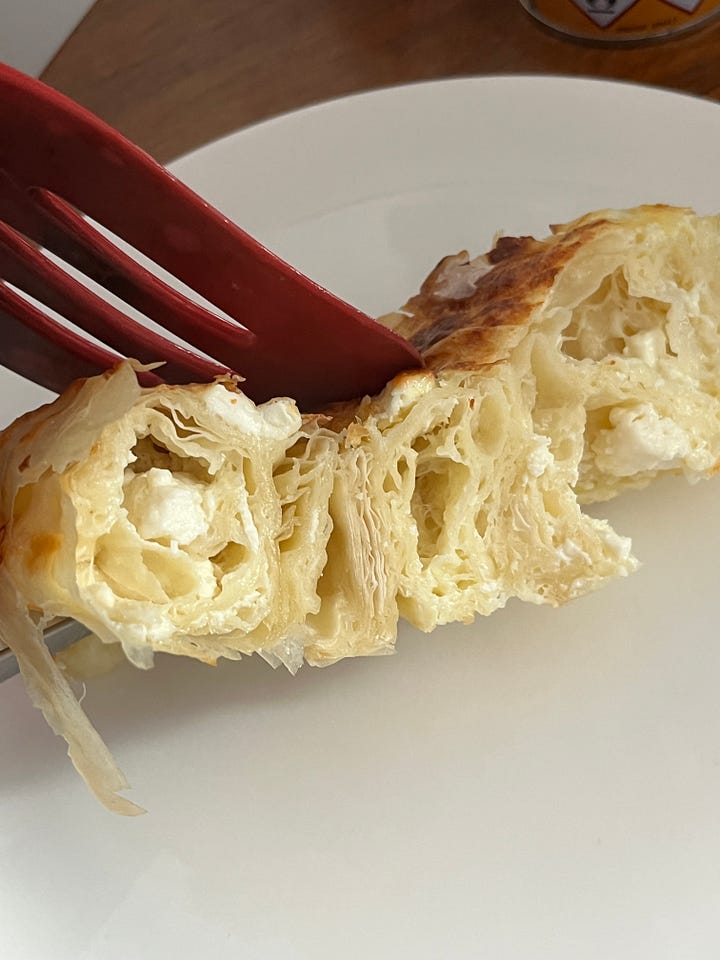

Over on KP+ I’m keeping the filo party going with a recipe for something savoury: Banitsa. Banitsa is a Bulgarian filo pie filled with yoghurt, eggs and cheese. It’s airy, crispy, light and so easy to make. Just six ingredients! My friend Mihaela showed me how to make it and I think you’ll love it too:
The tests
The simple combination of filo and apples is extraordinary - the extra time to concentrate and caramelise the apples before adding in is beneficial in several ways. Firstly, flavour and secondly, moisture. The apples, having already lost most of their water, sit happily inside the pastry and don't inflict sogginess on its pie colleagues. To relate the layering process to puff pastry, there is one huge added benefit of using filo - we don't need to worry about the heat of the filling. While I would avoid adding hot apples to a puff pastry lined tin so as not to melt and ruin the pastry, this isn't a concern with the individual filo leaves and the butter that is already melted.
While the little apple dumplings were alluring, the pastry and apples ratio was slightly off. The concertined apples were much more successful, but they were all dry. The most successful was definitely loyal to the original; With added raisins and zest, the caramelised apples zinged with tenderness. It was the exploded strudel of my dreams.
On the custard version, I strode ahead. With apples nestled within, I soaked the concertinaed buttered and sugared pastry sheets in the custard. Unfortunately, this was a total mess - WAY too much fat - the butter pooled in the pastry and split the custard. Sometimes there is such a thing as too much butter (rare as it is), which was a case in point.
I tried again and, this time, didn’t butter every sheet. The result - so fudgy, rich and stable, gooey in all the right ways but outrageously crispy on the top. The dense texture with pockets of caramelised apple goo and custard was just a lot of fun to eat. I tried a version with a slightly spiced custard, and it was definitely a step-up.
So which is my pick for the apple team?! Don’t worry, you don’t have to pick. Today I'll be sharing the custard-enriched version with you, but over on KP+, along with my friend Mihahela's Banitsa recipe (a Bulgarian filo pie), I'll give you the method and filling for the more classic version. Click here for the method.
Let's make it!
Crispy apple custard pie
Serves 8-10
Equipment: I made this in an 8-inch square baking dish, but you could also make it in an 8-inch round tin or any kind of dish, if you scale it up or down. If you are using a loose-bottomed cake tin, it's best to line it with a little bit of paper at the base to prevent custard leakage during the build. You can slip it out later.
Caramelised Apples
800-900g heritage apples, mixed varieties (avoid bramley) - unprepped weight
130g Caster sugar
45g Butter
Optional: 1-2 tbsp of your fave booze like calvados or brandy, 2 sprigs of rosemary
Pie Custard
100g Whole egg (about two)
250g Double cream
200g Whole milk
70g Light brown sugar
½ tsp Flaky salt
½ tsp cinnamon
½ a nutmeg, freshly grated
Optional infusing ingredients: 1 cinnamon stick (if doing this step, omit powdered cinnamon)
Filo pie
8-9 sheets of quality filo pastry from a Turkish shop, about 280g. (You can also use 1 x pack of the supermarket filo. The sheets are smaller, so you may need to layer slightly differently.)
75g Butter, melted
100g Caster sugar
Creme Anglaise to serve
200g Whole milk
200g Double cream
40g Caster sugar
50g Egg yolks
1 vanilla bean, split and scraped
Apple Method
Prepare the apples - peel and core and cut into even pieces, about 2cm in width.
In a low, wide frying pan, add the caster sugar. Heat the sugar over medium-high heat until it starts to melt, caramelise, and even burn in places, about 3-4 minutes. You can move it around if you want, but I normally just let it do its thing.
Add the butter along with the apples, rosemary and alcohol if using. Be cautious, as the caramel can bubble up, seize or spit.
Reduce the heat to medium low and let the mixture come to bubble. Lower the heat, then allow the apples to simmer in the caramel sauce for about 15 minutes or until tender. You might get a mixture of mushier and firmer pieces depending on the varieties.Once the apples are caramelised and softened, remove the pan from heat. Let the caramelised apples cool slightly before using, or cool completely and store in the fridge for 3 days
Pie method
If you are going to infuse the liquid with whole spices, heat together the milk, cream and cinnamon stick until simmering, then cover and leave for at least an hour, or cool and leave overnight.
To make the soaking liquid, heat the milk and cream until about 60c, then add the brown sugar and whisk to fully dissolve. Add the ground spices (if using), salt, and eggs.
Preheat oven to 170c fan. Brush your chosen baking dish with melted butter and sprinkle caster sugar to make the pie.
Cover the filo with a damp kitchen towel when not using to prevent it from drying out during preparation.
Lay out the filo sheets on a clean surface. Brush the filo sheet with melted butter and sprinkle with a tablespoon or so of sugar. Lay into the baking dish so it goes up the edges and there is a bit of overhang. Continue this, overlapping until the base and sides are covered.
Take a sheet of filo and dot about 60g of apples on top, adding any goo from the caramelisation process. Ruffle / concertina the filo so the apple is randomly strewn throughout. You can also ruffle it and add it into the dish plain, tucking in the apples afterwards, but I like doing it this way! Continue until the dish is filled. Tuck in any leftover apples.
Pour all of the prepared custard mixture into the filo-lined pie dish. Bring in the overhang and use it to create a bit of a lip.
Butter and sugar the remaining sheets, ruffling up loosely and placing on top of the custard, like scrunched-up raffia. We are aiming for height! There’s no limit to how many sheets you could pile on top, to be honest, if you’re going for drama!
Place the pie in the preheated oven and bake for about 45 minutes, or until the custard is set and the filo pastry is golden brown. The internal temp should read at least 74c.
Remove the pie from the oven and let the pie cool a little before serving. It can be enjoyed warm or cold. Serve with extra custard. If you have used a loose bottomed tin, you can leave it to cool slightly then remove the tin carefully and slide the tart onto a plate for impressive presentation. If desired, you can dust with icing sugar.
This keeps well in the fridge for several days but reheat before serving.
Creme Anglaise
Split the vanilla bean lengthwise and scrape out the seeds using a knife.
Combine the whole milk, half the sugar, double cream, scraped vanilla seeds, and the split vanilla bean pod in a saucepan. Heat the mixture over medium heat until it starts to simmer (do not let it boil). If you have time, leave this to infuse for several hours before continuing.
Whisk together the egg yolks and other half of sugar in a separate bowl until combined. Carefully ladle a small amount of the hot milk and cream mixture into the egg yolk and sugar mixture while whisking constantly to temper the eggs.
Gradually pour the tempered egg mixture back into the saucepan, through a sieve, with the remaining hot milk and cream mixture, stirring continuously.
Continue to cook the mixture over low to medium heat, stirring constantly, until it thickens (about 5-8 minutes) and reaches 84c. The custard should coat the back of a spoon. Strain the mixture through a fine-mesh sieve into a clean bowl to remove any curdled bits of egg.
Allow to cool to room temperature, and then refrigerate it until it is cold. You can make it 3 days in advance and rewarm gently before serving.


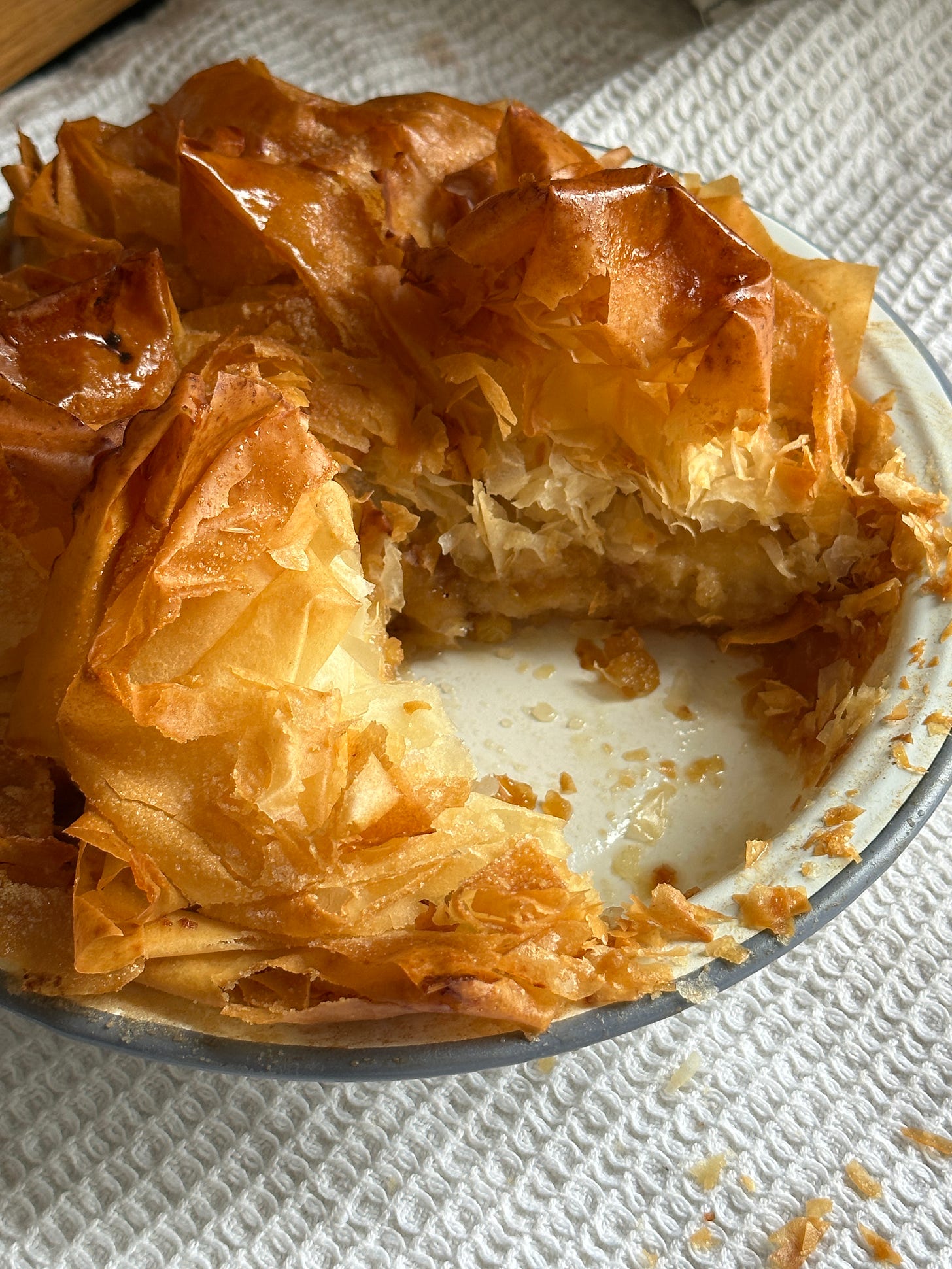
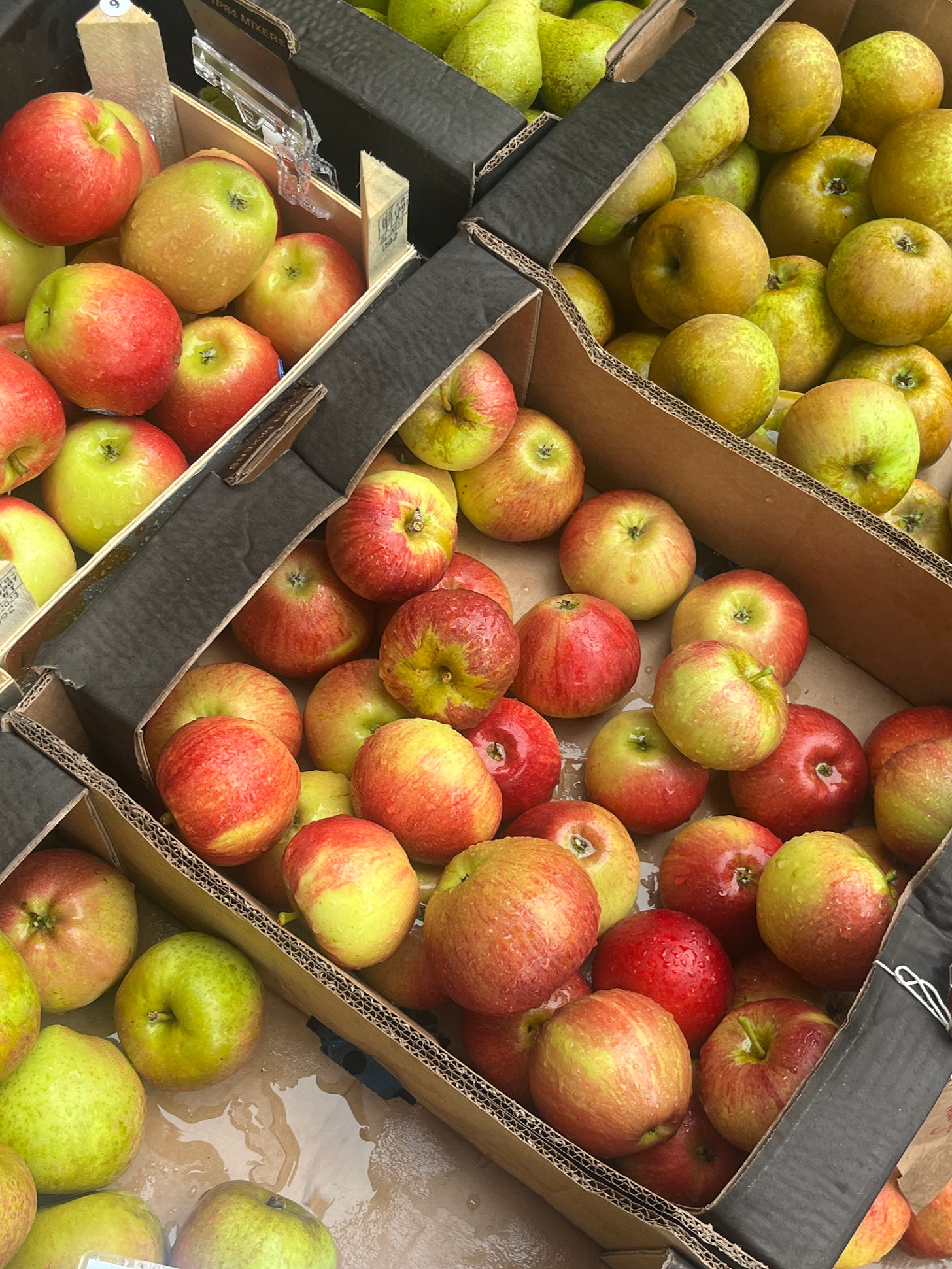
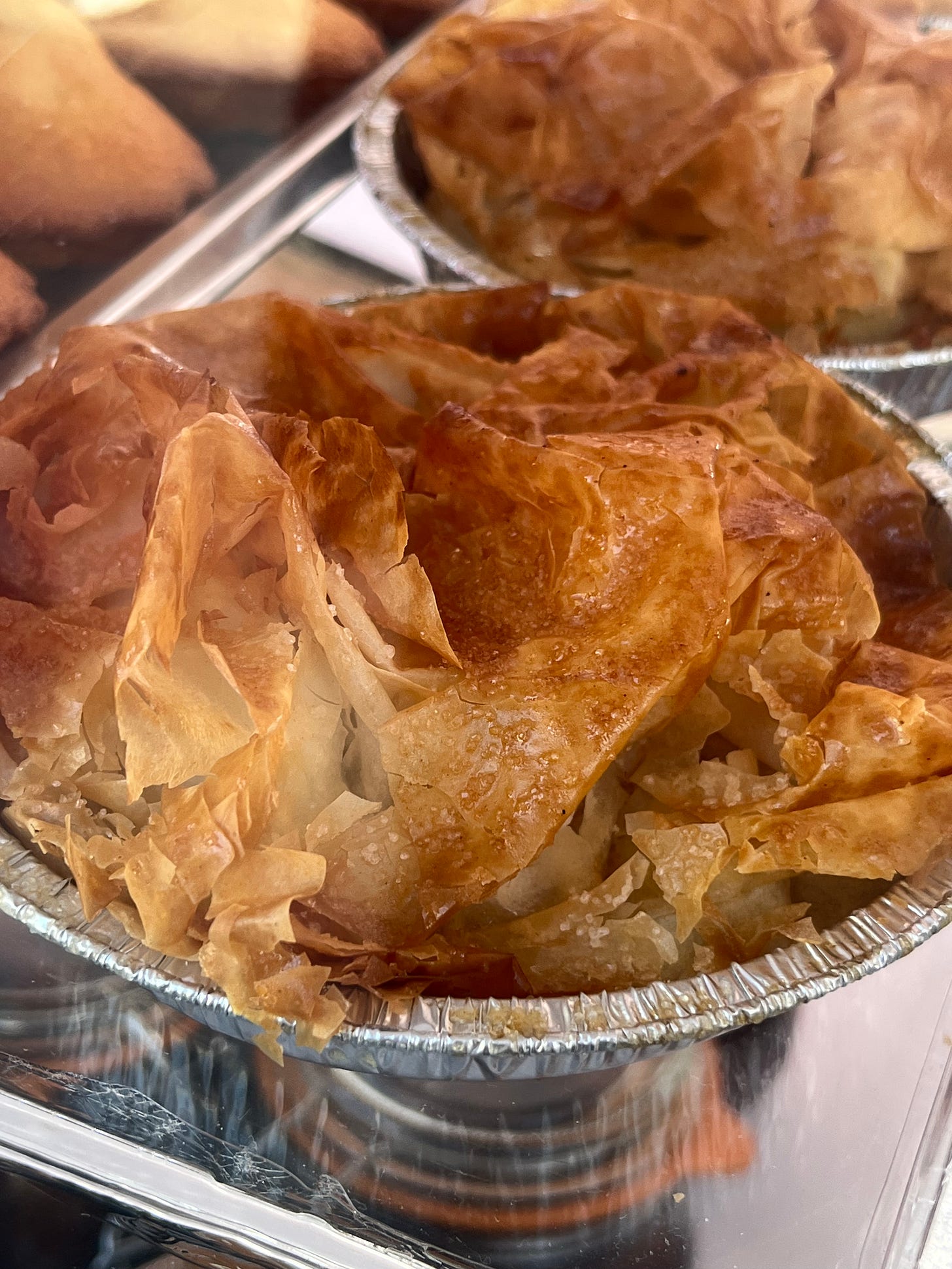
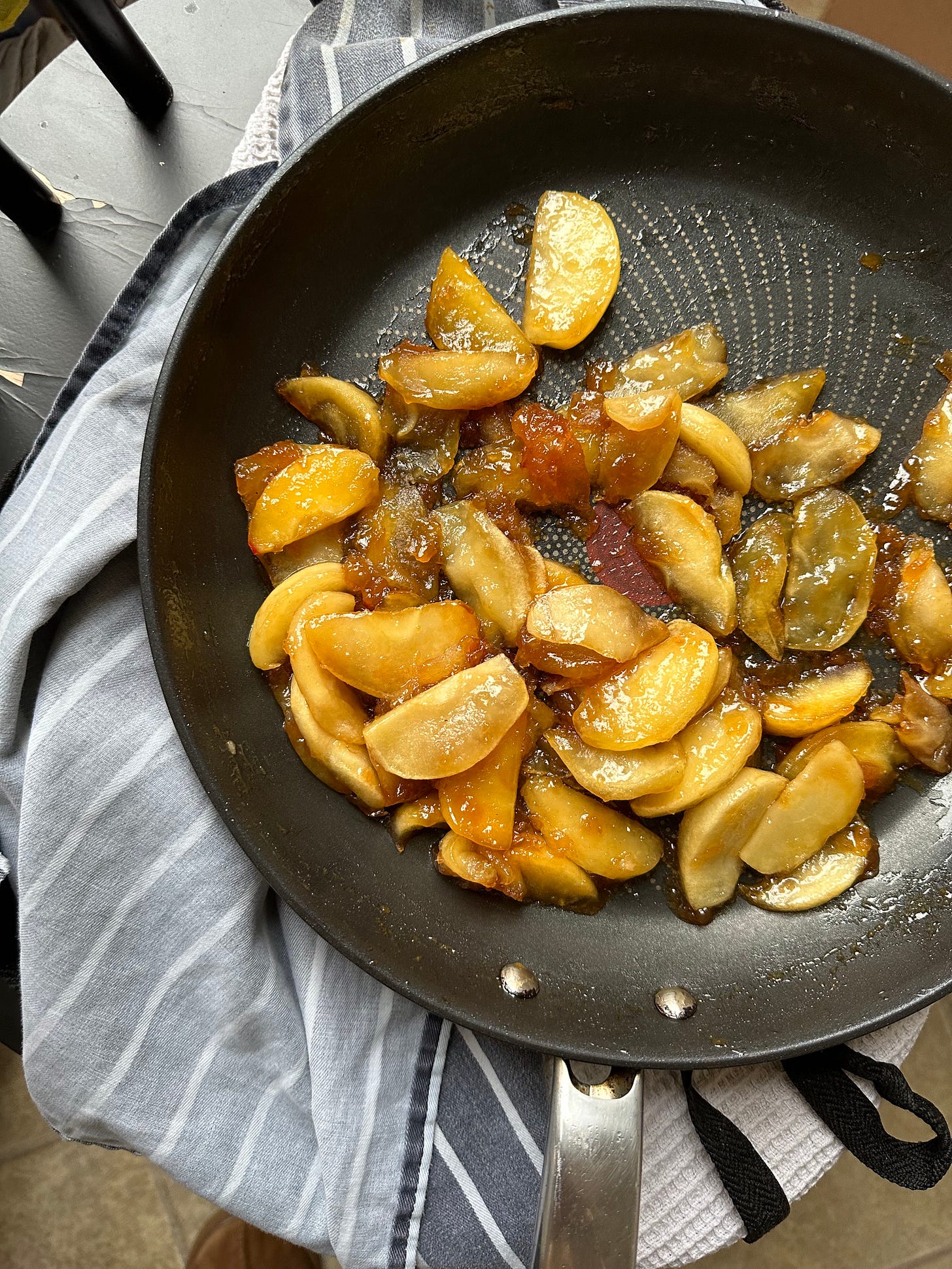
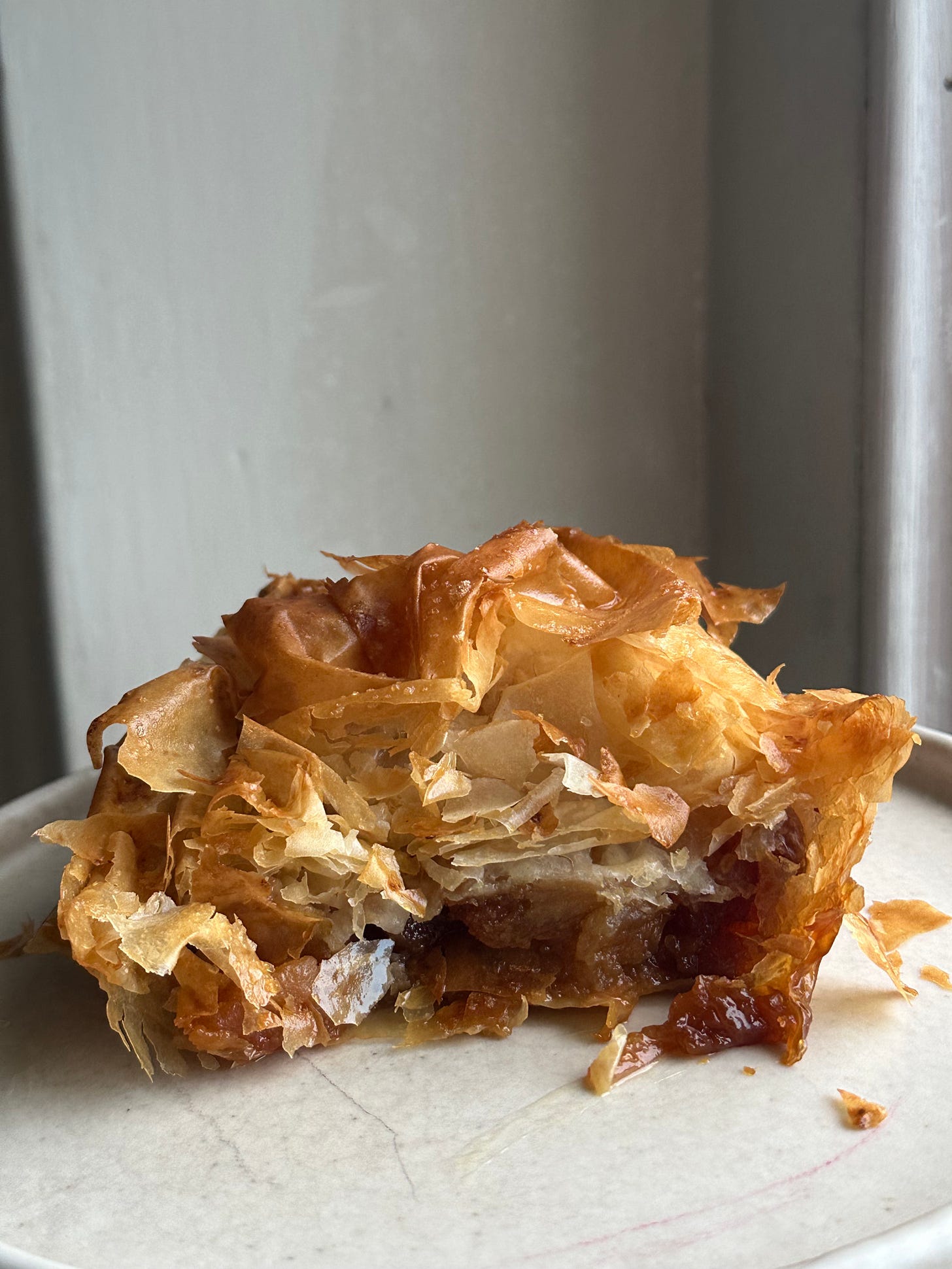

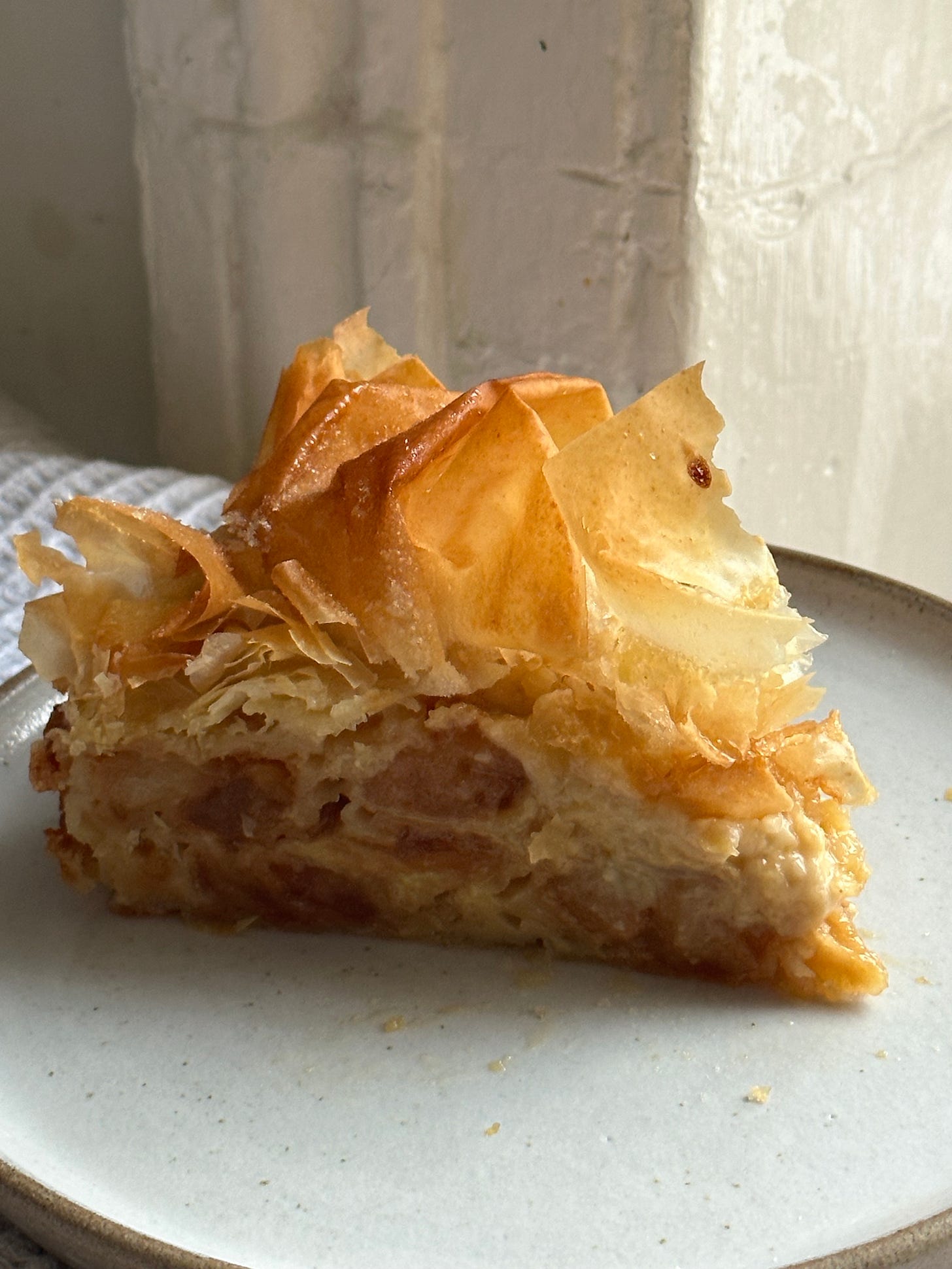
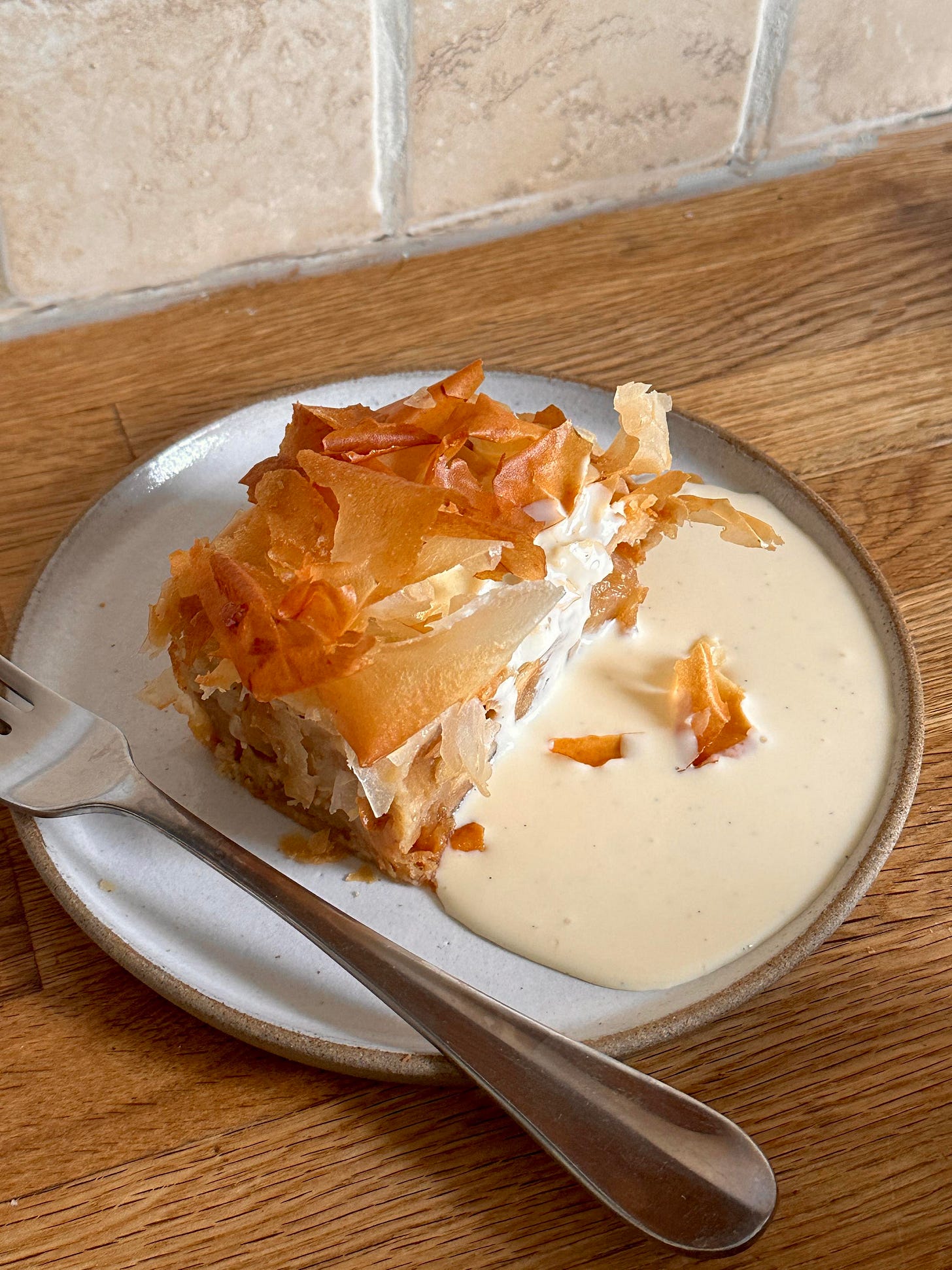
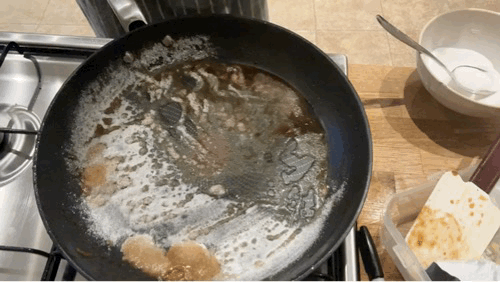
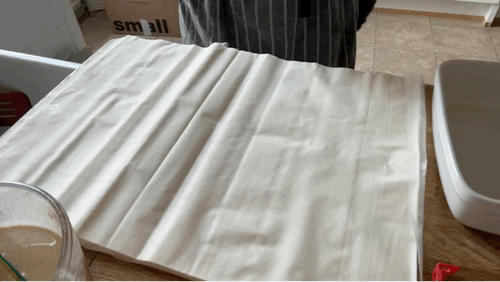
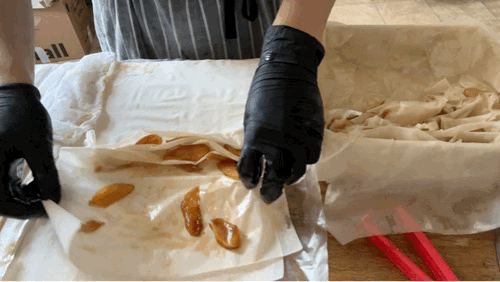
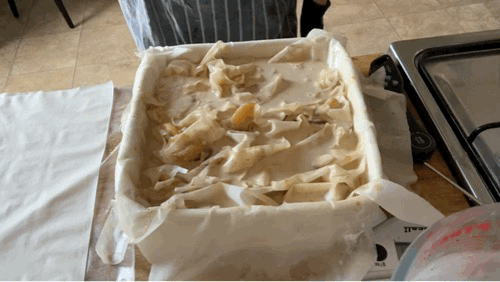
So happy you’ve made this Nicola, we bought some really gorgeous examples on our journey through SW France, including one at a market which the baker sprayed with aged, spiced rum just before boxing it up. This looks perfect.
Definitely making this today!